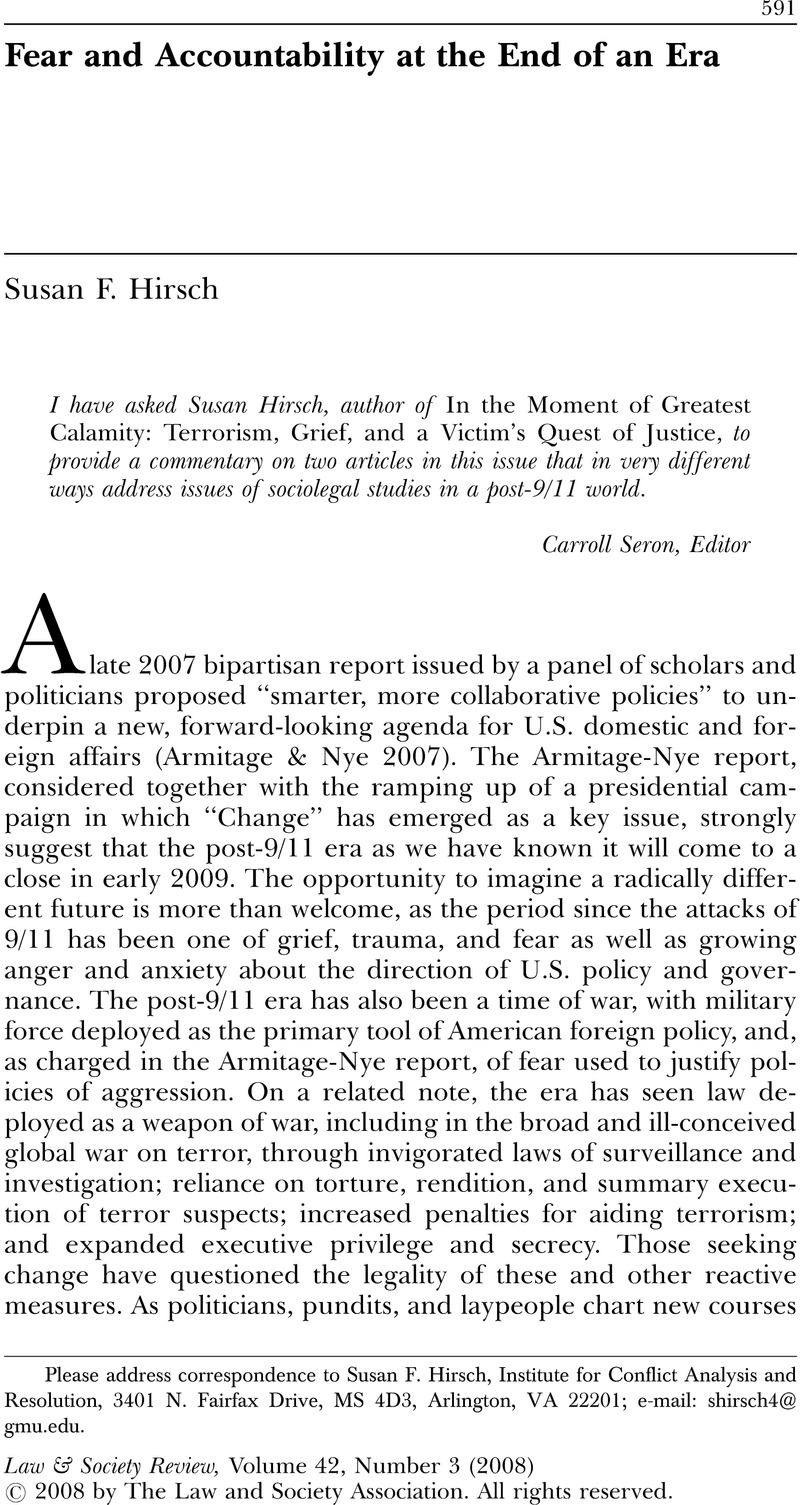Crossref Citations
This article has been cited by the following publications. This list is generated based on data provided by Crossref.
Pasquetti, Silvia
2013.
Legal Emotions: An Ethnography of Distrust and Fear in the Arab Districts of an Israeli City.
Law & Society Review,
Vol. 47,
Issue. 3,
p.
461.
Edelman, Lauren
and
Galanter, Marc
2015.
International Encyclopedia of the Social & Behavioral Sciences.
p.
604.
Gilbert, Emily
2018.
Victim compensation for acts of terrorism and the limits of the state.
Critical Studies on Terrorism,
Vol. 11,
Issue. 2,
p.
199.
Norris, Jesse J.
2020.
Accounting for the (Almost Complete) Failure of the Entrapment Defense in Post-9/11 US Terrorism Cases.
Law & Social Inquiry,
Vol. 45,
Issue. 1,
p.
194.


